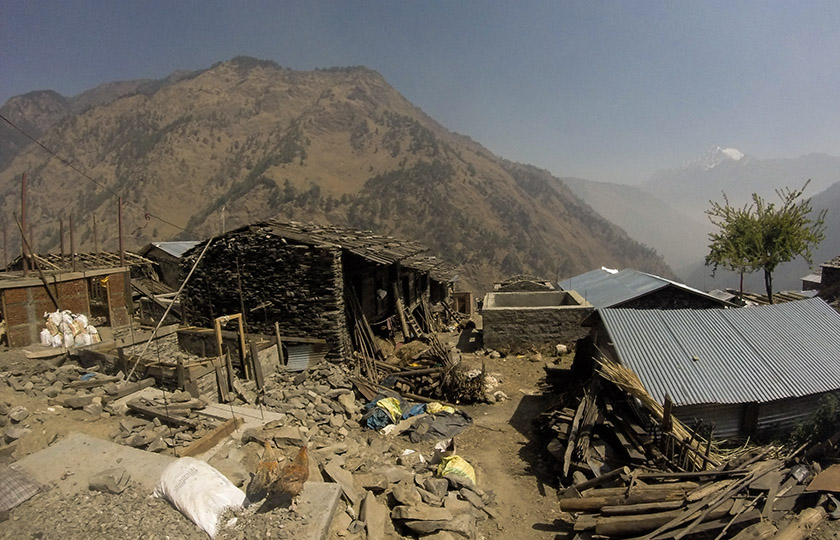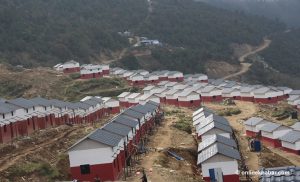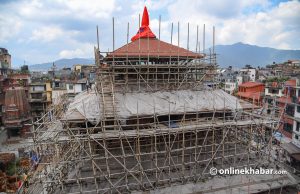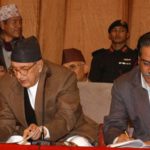Tara Tamang, 24, is a woman mason in Gatlang, a small village in Rasuwa. She is one of the first women in her village to work as a mason.
Women in the village would not do construction jobs till few years back. But, when the massive 7.6-magnitude earthquake struck the country on April 25 three years ago, most houses in her village collapsed and there was a dire need of reconstruction. On the other hand, most men in the region have left the place for better opportunities abroad or go to work in Kerung of Tibet, the rebuilding initiative had to be taken by women with the help of various aid organisations.
Hence, she took part in a 50-day training course in earthquake resilient construction provided by the Council for Technical Education and Vocational Training (CTEVT) and supported by HELVETAS and UK Aid.
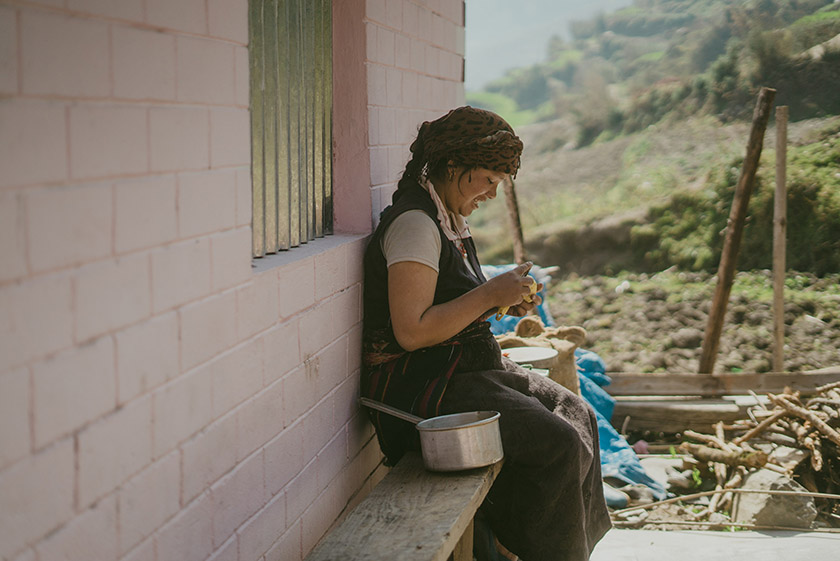
Photo: Suraj Ratna Shakya/DFID Nepal
Leading to liberation
The CTEVT training takes 10 workers, 30% of whom have to be female. The participants are taught basics of building an earthquake resilient home. They are doing this to give women opportunities not only to learn new skills but to gain employment afterwards. However, this was never going to be easy as the construction sector in Nepal, as in most countries, is largely dominated by men.
If one visits these areas, they notice that a lot of people in these regions are still living in temporary houses, trying to rebuild their permanent houses using materials available in the region.
“I think the training was a great initiative. A lot of women in the village have done well because of it. Like me, many had no job prior to this training; but because of this we have been able to do a lot,” Tara adds.
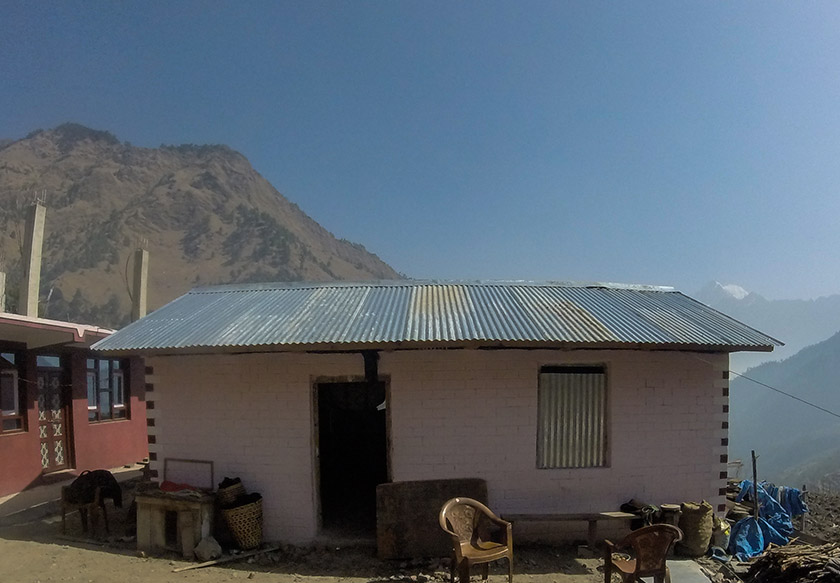
During the 50 days of training, she earned Rs 250 a day. “After I got the training, I was asked to build two houses in the village and now earn about Rs 15,000 a month.”
The money she earns is helping her pay for her seven-year-old son’s education in Kathmandu which totals to Rs 7,000-8,000 a month. Apart from that, she is now self sustained and doesn’t have to ask her husband for money. “I feel liberated in a way. I am studying and can go give exams with my own money in a way I don’t have to be dependent on others,” she adds.
Tara used to live in a stone house, but it was was damaged by the earthquake. Now, she has built her own house and has been doing fine thanks to the training she got. “As workforce in the village is limited, I’ve been asked to help to build many houses in the area from which I can earn Rs 500 a day,” adds Tara, who says that it was difficult at first, but support from her husband made it easy.
She’s not the only one. Kabita Ghale, 29, from the nearby village of Goljung, is a woman mason as well. She too took the training with three other women and has built three houses around the village.
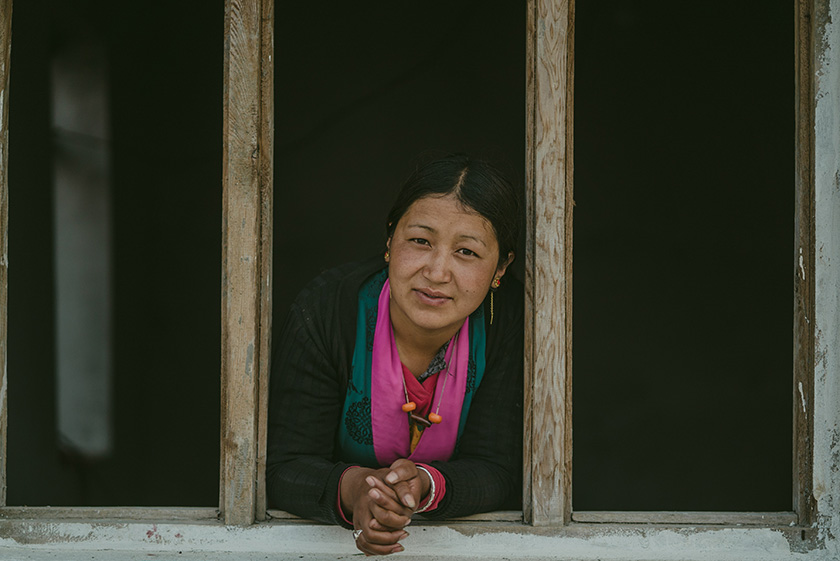
“I’ve learned a lot in the 50 days. I had no idea how to build houses, but to build my own house I had to learn,” says Kabita, who adds, “They taught us everything from scratch which included laying foundations to preparing the mortar and arranging the gaps for doors and windows, something that was useful while preparing an earthquake resilient house in the village.”
Roadblocks and remedies
But women working in the village do come with small hindrances because people discriminate between men and women till the date. For Kabita, it wasn’t as difficult because she got support from her family especially her husband. “Well, people speak a lot, it’s what they do and it doesn’t bother me,” she adds as she emphasises that this has helped her build her own house and send her children to schools.
Whilst both of them would like to work in construction, they feel unable to venture very far from home, especially in a group of unknown men, as this would attract a sort of societal disapproval. They pointed out that being able to select group members themselves would give solidarity, mutual support, and would also be more readily accepted by family members.
Only after visiting remote places in Nepal one will realise the damage caused by the 2015 earthquake, because the damage in the capital cannot be compared to those in hilly areas of Nepal. The earthquake destroyed livelihoods of many, particularly in four districts – Gorkha, Rasuwa, Nuwakot and Dhading.
At another remote village called Langbu, Memba Hyolyo Ghale, in her mid 50s worked to make foot trails from her village to Abu Kharka. She worked with fellow women to make foot trail which stretched from one village to another.
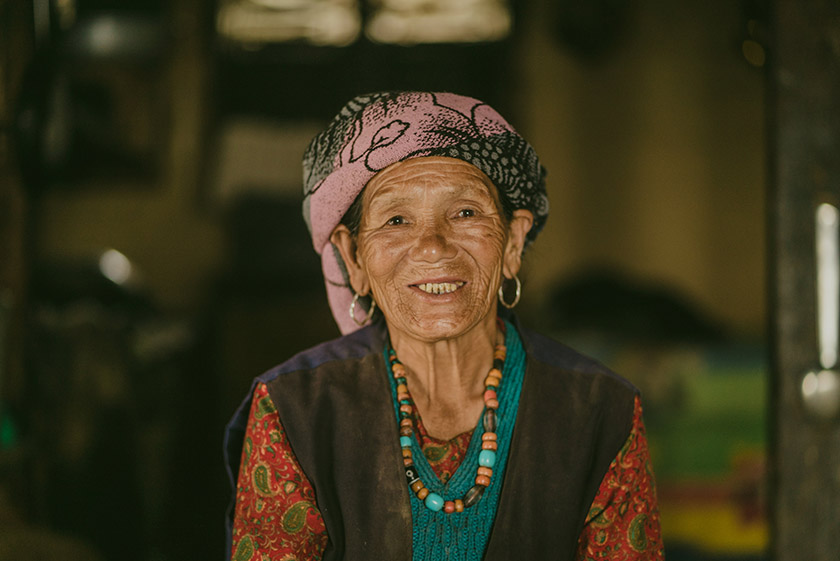
“Earlier, it was very hard to walk as there were potholes everywhere and the trail was very small but after we made the trail life is easier as connectivity between the two villages is good,” adds Ghale.
Even at such an old age, she felt the need to work and do well for her community where she worked in the sun carrying stones and earned a wage of Rs 900 a day. But the money she earned came to good use as she sends her youngest son to school.
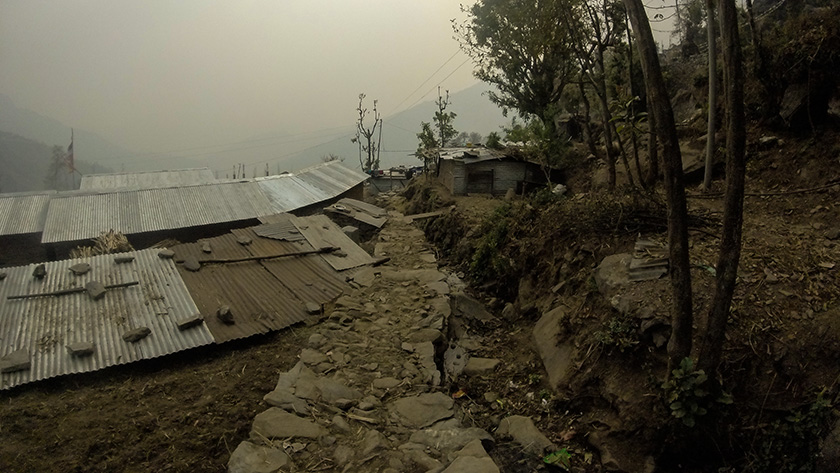
Breaking stereotypes
If you closely observe, most parts of the country have women working. They go cut grass for the cattle, they work in the farms for food; and most after the quake are on the roads breaking stones so people can build homes while men stay at home drinking or lazing around yet some in rural Nepal are in a state of denial that women shouldn’t be working.
Januka Neupane in her mid 30s, takes care of her family of five. She along with three other women for the past one year have been making Compressed Stabilised Earth Bricks (CSEB). These blocks are an alternative to bricks and are strong and earthquake resilient.

Photo: Suraj Ratna Shakya/DFID Nepal
Neupane, who still looks after her household, works in the CSEB plant owned by a school teacher at Bogatitar. “Working here has helped a lot as I get a steady income every month. Earlier it was hard to put two meals for the family, but now we’re doing fine and I’ve even started to build my own house using the same bricks.”
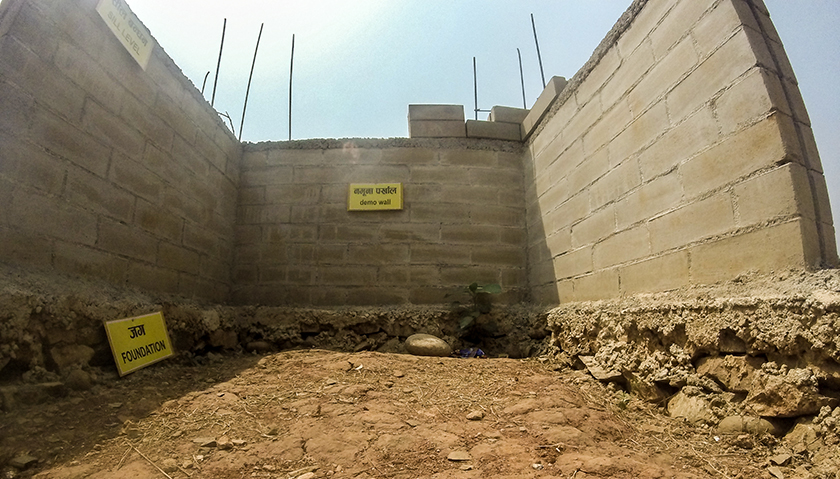
These interlocking blocks have been approved by the government and as word spread, more and more people are ordering them. The blocks while making a two-room house will come out to be Rs 30,000 cheaper than using bricks because these blocks are larger in size and need less mortar and manpower as compared to bricks.
A reason why Debaki Bhatta, 39, from Pipaltar invested in the CSEB machine a year ago when Build Up Nepal, an NGO, came up with a plan for her to buy the machine.
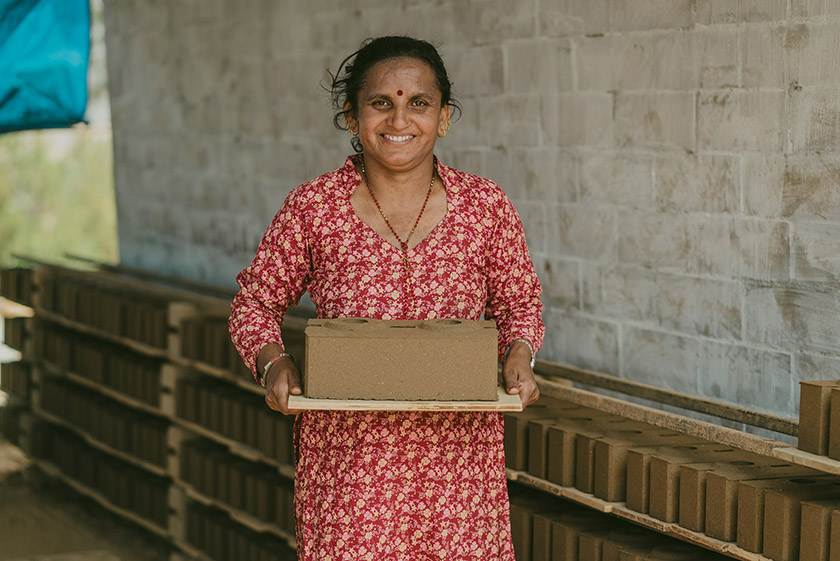
Photo: Suraj Ratna Shakya/DFID Nepal
“These blocks are really strong and could be produced anywhere which is why we had to do it,” says Bhatta who has recently bought another machine to make sure she can meet the supply that’s coming in from the nearby places.
With the money she’s earned by selling these block she has bought a land where she plans to build a CSEB house and has also dug a well in the compound which helps her get water relatively easily.
In the 21st century, women have proved they can be do anything a man can and here in Rasuwa they are taking the lead to building back their villages. It’s disappointing to see so many still living in temporary shelters; but gradually people a slowly getting back to their feet–led by women.



